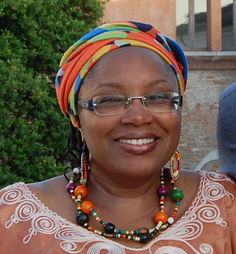
Alice Nderitu is a pioneer in the field of peacebuilding and violence prevention. She has served as Commissioner of Kenya’s National Cohesion and Integration Commission and as a Founding Member and co-Chair of the Uwiano Platform for Peace, which was pivotal in preventing violence surrounding the 2013 Kenyan Elections. Currently working as a Senior Advisor and as Lead Mediator in Nigeria for the Centre for Humanitarian Dialogue (HD), she is widely published as an author and academic and has developed Kenya’s only curricular training manual for teachers on the topic of inclusion and conflict prevention. Ms. Nderitu attended AIPR’s Global Raphael Lemkin Seminar in November of 2014 and the Raphael Lemkin Seminar Alumni Meeting in June of 2016.
What actions and policies do you feel are most effective in the long-term prevention of atrocities?
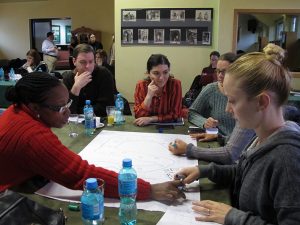 I always go back to the basics of conflict prevention because atrocities are usually initially defined as violent conflicts until the killings become too many, at which point they become an atrocity or genocide. In conflict prevention, you establish what issues or problems must be addressed, decide what to do about it and take preventive action. This is summarized as: analysis, strategy, action and evaluation. The most important thing for me is the continuity between these four phases. Analysis is about knowing as much as possible about a situation, developing a strategy that could involve policies and a plan of what needs to be done; implementing the strategy and assessing the impact of your actions. As you assess, you begin to move again towards analysis and continue with the cycle. To put it very simply: in analysis, you look at conflict indicators and triggers that help you understand root causes of conflict and then distinguish between symptoms of conflict and actual causes. This helps in strategizing and understanding which causes of conflict are important to assist in considering the various options available for action, and determining the most appropriate preventive measures. This results in a plan for prevention. To prevent recurrence, analyzing the conflict fault lines is crucial; these are the factors, issues and trends that underpin existing and potential conflict in this context and how they interact with one another.
I always go back to the basics of conflict prevention because atrocities are usually initially defined as violent conflicts until the killings become too many, at which point they become an atrocity or genocide. In conflict prevention, you establish what issues or problems must be addressed, decide what to do about it and take preventive action. This is summarized as: analysis, strategy, action and evaluation. The most important thing for me is the continuity between these four phases. Analysis is about knowing as much as possible about a situation, developing a strategy that could involve policies and a plan of what needs to be done; implementing the strategy and assessing the impact of your actions. As you assess, you begin to move again towards analysis and continue with the cycle. To put it very simply: in analysis, you look at conflict indicators and triggers that help you understand root causes of conflict and then distinguish between symptoms of conflict and actual causes. This helps in strategizing and understanding which causes of conflict are important to assist in considering the various options available for action, and determining the most appropriate preventive measures. This results in a plan for prevention. To prevent recurrence, analyzing the conflict fault lines is crucial; these are the factors, issues and trends that underpin existing and potential conflict in this context and how they interact with one another.
Community ownership of the entirety of peace processes is essential to preventing atrocities. I find it very important to involve the communities at risk, as either victims or perpetrators, in atrocities conflict prevention plans. Demands made to governments for policies on prevention that come from communities are especially powerful. I work with ethnic communities in conflict and find it useful to help develop a community prevention action plan that commits both the communities and their government(s) to action.
It always helps to ask: “What does peace look like to you?” Sometimes they say peace means the absence of the community they consider the enemy, which gives an opening for an honest conversation. I also find it important to disaggregate communities at risk of experiencing atrocities into categories; men, women, youth, people with disability and the very poor. This is because conflicts affect them differently and dealing with their causes differently makes the whole of the community prevention plan more solid.
Ultimately, the proof of a success lies is in how much these communities are able to integrate the principles of conflict prevention into what they do on a daily basis; a nurse, for instance, speaking of conflict prevention to people she treats, a veterinary or agricultural officer speaking to farmers on conflict prevention in the middle of a conversation on potato or yam growing. A lot of capacity building is required in the communities on difficult, yet basic, subjects, like steps for building trust between communities. This forms the backbone of the community conflict prevention plan.
Why are you so dedicated to the field of genocide and mass atrocity prevention?
In the course of my work I have seen some of the worst atrocities that human beings have the capacity to carry out against each other; deaths in their most horrid form, torture and displacement. I call myself a child of two worlds, peacebuilding and human rights.
I began with human rights; peacebuilding came later. Those in the field of human rights find it very difficult to work with perpetrators in order to solve violence, yet, in peacebuilding, those are the people who end up at the table to discuss peace. As a peacebuilder, I have to identify the person with the highest capacity to cause violence because, conversely, they have the highest capacity to ensure peace… even as every human rights bone in my body says that I should ensure that the person pays for their atrocities.
It has been a very tough balance. Yet, often, the decision is way beyond me because I have worked in places where criminal justice mechanisms have broken down and in which bringing perpetrators to book is not an option. After years of teaching various human rights declarations and conventions, the distance between what I was teaching and the issues on the ground had increasingly frustrated me. How, for instance, was I supposed to explain to people in Rwanda that, when genocide was happening in their country in 1994, the Convention on the Prevention and Punishment of the Crime of Genocide had entered into force on 12th January 1951? There was a total disconnect between human rights declarations and conventions and what was on the ground. I was training people in my continent, Africa, on human rights legal instruments that they could only apply remotely, if at all, because many of our Constitutions then did not have any direct human rights provisions. Yet, ironically, human rights concerns and violations related to land ownership, competition over resources and identity issues were the causes of the violence that led to, and continue to lead to, mass atrocities.
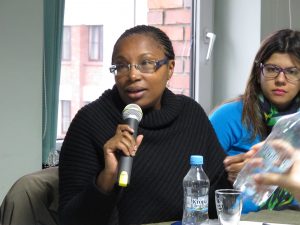 I am dedicated to the field of genocide and mass atrocity prevention because I genuinely want to do my bit as a human being in ensuring that the next generation in Africa does not have to deal with the issues of mass atrocity. I believe that if I keep at it, we may eventually find an appropriate legal framework that addresses both peacebuilding and human rights in equal measure. If we have enough case studies linking the two areas then this ideal framework could promote human rights principles as conflict transformation values, founded on the basis of shared needs that are common to all people which are, in essence, human rights concerns. I am therefore searching for complementarity and mutual reinforcement between the two areas. If I am able to help in finding it then I shall have contributed towards policies, prevention plans and legislation that will provide a concrete way to end to genocide and mass atrocity in the world and save many lives. This is something I would not be in a position to do as an individual, thus I am constantly seeking for ideas and partnerships.
I am dedicated to the field of genocide and mass atrocity prevention because I genuinely want to do my bit as a human being in ensuring that the next generation in Africa does not have to deal with the issues of mass atrocity. I believe that if I keep at it, we may eventually find an appropriate legal framework that addresses both peacebuilding and human rights in equal measure. If we have enough case studies linking the two areas then this ideal framework could promote human rights principles as conflict transformation values, founded on the basis of shared needs that are common to all people which are, in essence, human rights concerns. I am therefore searching for complementarity and mutual reinforcement between the two areas. If I am able to help in finding it then I shall have contributed towards policies, prevention plans and legislation that will provide a concrete way to end to genocide and mass atrocity in the world and save many lives. This is something I would not be in a position to do as an individual, thus I am constantly seeking for ideas and partnerships.
Can you speak about the Uwiano Platform for Peace in Kenya? Specifically, can you talk about the origins of Uwiano, your role in its creation and development, and how it works? What does “Uwiano” mean and why did you and your colleagues choose to name the platform that?
Following its creation under an Act of Parliament that responded to Kenya’s 2007 and 2008 Post-Election Violent Conflict and the subsequent political negotiations led by Dr. Kofi Annan, I worked as a Commissioner with the National Cohesion and Integration Commission (NCIC). The Commission was established as one of the instruments to respond to the post election crisis and promote peaceful co-existence among Kenyans. Prior to joining the Commission, I had also worked in another Commission: the Kenya National Commission on Human Rights. I had been on the ground as the 2007-8 violence unfolded. We had issued several warnings on the hate speech and attacks that eventually built up to the widespread violence, but we were largely ignored.
I joined NCIC haunted by words that I had frequently heard from those who survived the violence: “we knew that we would be attacked but did not know whom to tell”. There was no trust for law enforcement agencies, as many people suspected that they too had taken sides. As a Commissioner, I had the power to create something to make sure people had someone to tell if they suspected that they would be attacked. I approached Ozonnia Ojielo, then Senior Peace and Development Advisor for the UN and asked him for help in putting together a response mechanism for communities in conflict. This mechanism would function through the NCIC, beginning with the lead up to the 2010 Constitutional Referendum.
The conflict analysis we had carried out showed clearly that there would be violence. Ozonnia suggested that a group of complementary agencies would be better than NCIC alone. This led to the first meeting between myself, representing NCIC, Ozonnia for the UN, Ahmed Isaak Hassan as Chair of the Independent Interim Electoral Commission, and Kathurima M’inoti as Chair of the Kenya Law Reform Commission, as we explored the option of how to prevent violence in the referendum process in the NCIC boardroom. This option, unfortunately, did not work, so we brought on board the National Steering Committee on Peace Building and Conflict Management (NSC). The NSC was based in the Office of the President and had created District Peace Committees countrywide. They also had access to law enforcement agencies who we decided would not be involved directly, as people did not trust them yet. The NSC presented the option of working indirectly with law enforcement agencies.
Ozonnia and I crafted a conflict prevention strategy that would bring together the NCIC, UNDP, National Steering Committee on Peace Building and Conflict Management (NSC), in partnership with civil society as represented by PeaceNet, a network of more than 500 NGOs that existed to sustain a broad-based coalition of peace workers, largely at the grassroots level. This was very unique. We were not aware of any other initiative that brought together civil society, independent Commissions, the United Nations, and the national government, as represented by the NSC.
We were now joined by Dickson Magotsi of the NSC and Phillip Onguje of PeaceNet and jointly, at Panafric Hotel, developed the conflict prevention strategy into a concept paper. We clarified objectives, outcomes and the challenges to what we were proposing. The only thing missing was a name. It would have to be a platform for peace, we agreed. After some debate, we agreed that we would give the organization a Kiswahili name that could easily roll off of Kenyan tongues. Ozonnia, a Nigerian, wondered aloud what the English word cohesion translated to in Kiswahili. This is “Uwiano”. Thus, the name “Uwiano Platform for Peace” was born. We had no way of knowing then that Uwiano would become a household name by the end of the 2010 Referendum and be at the core of conflict prevention efforts during the 2013 General Elections.
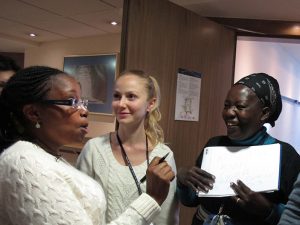 Each of us then took the document back to our respective organizations for approval. Following this, Ozonnia and I convened our first full meeting that included PeaceNet – Kenya, the National Cohesion and Integration Commission (NCIC), and National Steering Committee (NSC) on Peace Building and Conflict Management, and the United Nations Development Programme (UNDP), to give feedback on the concept. The Electoral Commission came in later. At this initial meeting, I was joined by two NCIC Commissioners, Executive Director Mutuku Nguli represented PeaceNet, S.K Maina represented the NSC as its Coordinator, and Ozonnia represented the UNDP. The most senior of us became known as The Principals. I became, as Founder, co-chair of Uwiano alongside S.K Maina of the NSC. By the time the actual 2010 referendum took place, we had several staff members from PeaceNet, the NSC, the UNDP, the NCIC and the NSC working full time for Uwiano.
Each of us then took the document back to our respective organizations for approval. Following this, Ozonnia and I convened our first full meeting that included PeaceNet – Kenya, the National Cohesion and Integration Commission (NCIC), and National Steering Committee (NSC) on Peace Building and Conflict Management, and the United Nations Development Programme (UNDP), to give feedback on the concept. The Electoral Commission came in later. At this initial meeting, I was joined by two NCIC Commissioners, Executive Director Mutuku Nguli represented PeaceNet, S.K Maina represented the NSC as its Coordinator, and Ozonnia represented the UNDP. The most senior of us became known as The Principals. I became, as Founder, co-chair of Uwiano alongside S.K Maina of the NSC. By the time the actual 2010 referendum took place, we had several staff members from PeaceNet, the NSC, the UNDP, the NCIC and the NSC working full time for Uwiano.
We immediately set to work on preventing violence during the 2010 Referendum on Kenya’s new Constitution. Initially, we agreed to prioritize a list of traditional violent conflict hotspots that were historically prone to igniting over political and electoral concerns. These hotspot priorities included: Njoro, Kuresoi, Molo, Eldoret, Kibera, Mathare, Korogocho and Likoni in Mombasa. Conflict triggers included: the levels of unemployment and lack of opportunity, unresolved IDP issues, boundary disputes, proliferation of small arms, hate speech and leaflets, as well as panic self-displacement, which often comes as a result of one or a combination of the listed triggers.
We also agreed on three main objectives for the Uwiano Platform for Peace, which encompassed the peacebuilding ideals of the four organizations:
- To build partnerships of national actors to address pertinent issues with regard to the prevention of conflict during the referendum and elections period.
- To strengthen early warning and early response mechanisms at all levels as a support mechanism for effective conflict prevention and intervention.
- To establish a solid foundation for national cohesion and integration for a peaceful and prosperous Kenya.
The idea behind the Uwiano Platform for Peace (which we subsequently referred to as simply Uwiano) was basic. We wanted Uwiano to put Kenyans in charge of their own peace and conflict prevention by linking early warning to early response. We did this through the mobile phone. Uwiano Platform for Peace grew into a system that included online tools and features for tracking, reporting, and retrieving evidence of hate speech, incitement, and other forms of violence instigation through text, images, voice, and video. People were able to send alerts of potential or currently occurring referendum-related violence through a toll-free SMS Short Code or by email. To publicize the toll-free SMS number, we shared it with the all-regional media outlets. The circulation of the toll-free SMS number ensured that incidents or intentions of violence were reported in time and were acted upon to avert the possibility of violence breaking out.
Incoming messages were placed into one of six categories: – informative, threat, positive message, hate speech, coded message, and incitement to violence. In order to verify claims of hate speech, violence, or anything that might require action by the authorities, team members called the sender of the message as well as other officials in the area. The team would then forward the messages to relevant organizations to deal with it, depending on the content. We scaled up leading to the 2013 Elections and invited UN Women and the Independent Electoral and Boundaries Commission to join Uwiano.
As a result of this, Uwiano has been widely credited for preventing violent conflict in the 2010 referendum and the 2013 general elections in Kenya. Uwiano has since evolved into a solid national conflict prevention and response strategy. It enhances coordination among partners and has expanded to the County level.
I am glad to have played the key role of founding the Uwiano platform for peace and chairing Kenya’s first, and most inclusive, conflict prevention mechanism linking early warning to early response.
Can you speak about your experience with prevention-related projects in Nigeria?
I work as a Senior Advisor and as Lead Mediator in Nigeria for the Centre for Humanitarian Dialogue (HD) a private diplomacy organization devoted to helping prevent, mitigate, and resolve armed conflict through dialogue and mediation. I usually tell Ozonnia Ojielo that my work in Nigeria is to pay back what he did for my country, Kenya, particularly in 2008-2013, when our country was in trouble. Ozonnia, through his position at the UN, supported every single one of the Commissions that were set up by the Kofi Annan Accord, intended to develop policies to ensure practices that helped prevent violent conflict in the 2013 elections.
Thus, it’s my turn to work for Nigeria. HD has facilitated Inter-communal dialogue and conflict mediation processes between several ethnic communities in Jos, Plateau, Southern Kaduna and Southern Plateau States to establish long-term solutions to the on-and-off ethnic and religious violence that had occurred for close to two decades. HD works at the community level and serves as a catalyst, linking communities in conflict through dialogue, both with each other and with the Federal, State and Local Governments. The dialogues aim to help communities find lasting solutions to the disputes and conflicts between them.
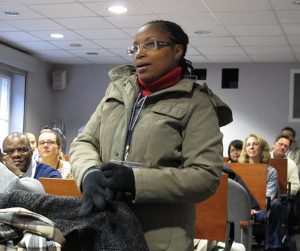 I initially joined HD as an advisor on gender and ensured that women participated and directly influenced the agenda and recommendations. We had one of the world’s major successes in women’s inclusion in Jos. Female participants were assisted by a steering committee of technical experts and featured women in each of the thematic areas in the dialogue. Each community had a woman, or women, functioning as representatives in their negotiating team, which is very unusual in peace negotiations. The women’s steering committee, led by a Coordinator, Khadijah Hawaja Gambo strengthened the capacity of the negotiating women to better grasp the issues, represent the views of women from the wider Plateau community, and analyze the issues from a gender perspective. The women in the steering committee and on the negotiating teams gave feedback to the recommendations produced by the main process. In this way, the women were able to guarantee a fairly independent, yet inclusive, process. The inclusion and participation of these women represented a huge achievement, given that peace processes are widely understood as security issues worldwide. As men dominate the security sector, women are therefore either underrepresented or entirely left out of peace processes.
I initially joined HD as an advisor on gender and ensured that women participated and directly influenced the agenda and recommendations. We had one of the world’s major successes in women’s inclusion in Jos. Female participants were assisted by a steering committee of technical experts and featured women in each of the thematic areas in the dialogue. Each community had a woman, or women, functioning as representatives in their negotiating team, which is very unusual in peace negotiations. The women’s steering committee, led by a Coordinator, Khadijah Hawaja Gambo strengthened the capacity of the negotiating women to better grasp the issues, represent the views of women from the wider Plateau community, and analyze the issues from a gender perspective. The women in the steering committee and on the negotiating teams gave feedback to the recommendations produced by the main process. In this way, the women were able to guarantee a fairly independent, yet inclusive, process. The inclusion and participation of these women represented a huge achievement, given that peace processes are widely understood as security issues worldwide. As men dominate the security sector, women are therefore either underrepresented or entirely left out of peace processes.
Following this, I became the Lead Mediator in the neighboring state of Southern Kaduna, Nigeria, which has experienced violence leading to thousands of deaths. I mediated an armed conflict between twenty-nine ethnic communities, each represented by a further six people. This resulted in the Kafanchan Declaration. It was the first time in the history of Nigeria, and many parts of Africa including Kenya, that a woman had performed this role. Two Executive State Governors: Ahmad Nasir El- Rufai and Simon Bako Lalong of Plateau State signed the Declaration on March 23rd 2016. The Agreement addresses endemic farmer-grazer disputes, internally displaced populations, unemployment levels, the lack of skills in youth populations, adequate security surveillance, and the need for alternative dispute resolutions. We are now working on the implementation of the peace agreement, which has proven to be quite challenging. There are just as many challenges in implementing an agreement as there are in reaching the agreement in the first place!
At the moment, I am currently working as the lead mediator of an inclusive dialogue of forty-six ethnic communities in the Southern Plateau, each of which is represented by six people. On the 28th of July, 2016, the Executive State Governor Simon Bako Lalong publicly signed the roadmap to open the dialogue. We had to hold this signing process in a stadium, due to the number of people belonging to these ethnic communities who wanted to witness this historic event. The dialogue represents an extremely difficult undertaking, but there is so much political will from the Government. The people have also reached the point of a mutually-damaging stalemate, which also really helps. They, therefore, want to peacefully co-exist and my task is to facilitate their ability to tell us how we can do this.
The conflicts that I have mediated in Nigeria have been, and are still are extremely sensitive. We are still working to strengthen the communities, with regards to the implementation of the resulting agreements.
You have developed manuals and curricula for the prevention of genocide. Can you speak about what inspired your work on this and what this literature consists of?
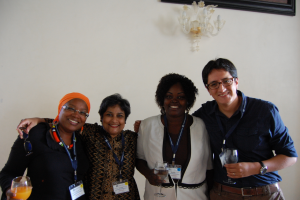 I authored Beyond Ethnicism: Exploring Ethnic and Racial Diversity for Educators, approved by the Kenyan Institute of Curriculum Development and Ministry Education as Kenya’s first and only official teacher training curriculum manual on conflict prevention and ethnic inclusion. Our schools, like our country, have experienced serious ethnic divisions which have led to conflict. The manual teaches teachers how to go beyond ethnicism by creating an understanding of how a school community can contribute towards ending ethnic conflict by enhancing mutual trust, respect for differences, and openness towards diversity. It discusses the levels through which a conflict can rise to become a genocide and or mass atrocity. It illustrates that a new approach to ethnic interaction, between learners and learners, learners and educators, and learners, educators, and parents, can make a positive difference towards the promotion of diversity and pluralism in school communities. Educators who teach his or her learners to respect other communities are able to instill in them the desire to live in harmony as adults. The manual’s organizing principle is that the diversity of the country’s ethnicities, races, languages, cultures and religions should not be a pretext for conflict, but rather a source of identity as part of a single Kenyan nation.
I authored Beyond Ethnicism: Exploring Ethnic and Racial Diversity for Educators, approved by the Kenyan Institute of Curriculum Development and Ministry Education as Kenya’s first and only official teacher training curriculum manual on conflict prevention and ethnic inclusion. Our schools, like our country, have experienced serious ethnic divisions which have led to conflict. The manual teaches teachers how to go beyond ethnicism by creating an understanding of how a school community can contribute towards ending ethnic conflict by enhancing mutual trust, respect for differences, and openness towards diversity. It discusses the levels through which a conflict can rise to become a genocide and or mass atrocity. It illustrates that a new approach to ethnic interaction, between learners and learners, learners and educators, and learners, educators, and parents, can make a positive difference towards the promotion of diversity and pluralism in school communities. Educators who teach his or her learners to respect other communities are able to instill in them the desire to live in harmony as adults. The manual’s organizing principle is that the diversity of the country’s ethnicities, races, languages, cultures and religions should not be a pretext for conflict, but rather a source of identity as part of a single Kenyan nation.
I authored the manual as a way of giving back to Kenya. I had been immensely privileged to serve as a Commissioner of the NCIC and had learned a lot. I have been exposed to several trainings on genocide and mass atrocity prevention and felt it was important to transfer this knowledge to others. I decided to write for educators because of the capacity that they have to influence learners. I also did this in response to a teacher who asked me to write something that would help teachers to arrest the moment in time when a child develops hateful tendencies towards other ethnic and religious communities and help them to instead influence her or him in a positive manner.
What advice do you have to give towards effective work in genocide prevention?
I saw a comment on a plaque at the genocide memorial in Rwanda that I quote everywhere, to as many people as I can. It said something to the effect that people think of genocides in huge numbers: 1 million in Rwanda, 6 million in the Holocaust, etc. However, in reality, all of those people are not killed in one day. They are killed gradually: two people here, five there, fifteen here, thirty there, and so on and so on, until these deaths begin to look normal. Then, one day, everyone realizes that a million people are dead and we have genocide on our hands. To stop the genocide of a million people, we must stop the deaths of a few that we often take for granted.
